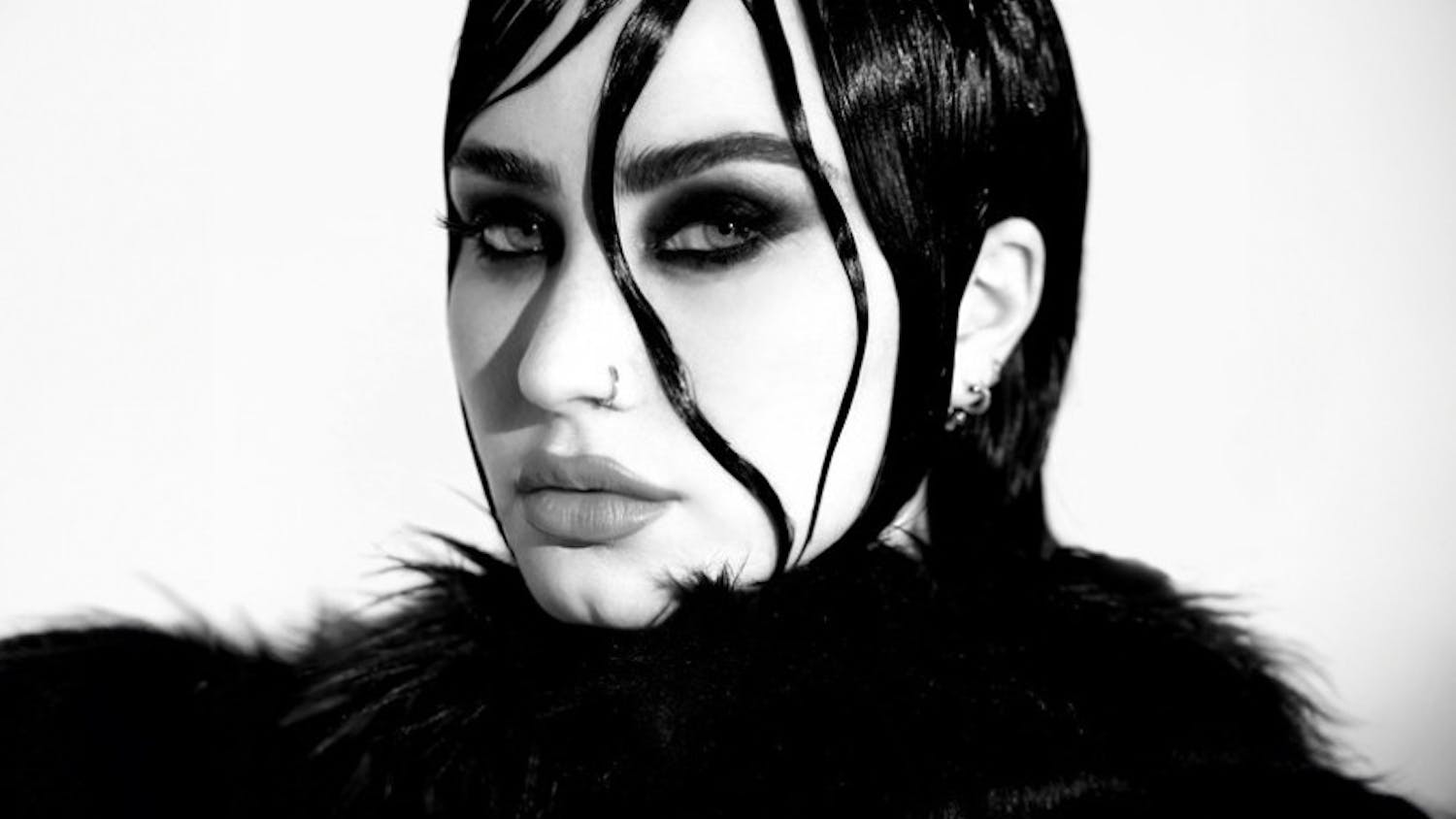The 2004-2005 IU Opera Season opened Friday at the MAC with one of the most emotional and beloved operas of all time -- Giacomo Puccini's "La Bohème." Set in the Latin Quarter of 1830's Paris, "La Bohème" details the lives and loves of four struggling artists sharing an old attic apartment. Act I portrays the difficulty of the artists' lives through their inability to keep warm and pay rent. Rodolfo, a poet, stays behind as his friends leave for the café. While he writes, his neighbor Mimi, a destitute seamstress, enters and asks him to relight her candle, which has blown out from the wind. The two fall in love immediately. In Act II Mimi joins the group of artists at the café and Marcello, the painter of the group, is reunited with his high-living ex-lover, Musetta.\nAct III features a sudden turn in events. Rodolfo has left Mimi because he thought she was too flirtatious with other men. Mimi then enters coughing, a cough which eventually takes her life, and begging to see Rodolfo. The two discuss their feelings and decide to remain apart as Marcello and Musetta fight and separate again. Though Act IV begins with a spirited joke scene by the artists, the mood changes when Musetta discovers a secret which provides for a tragic plot twist at the end of the third act. As the third act comes to an emotional end, Mimi and Rodolfo admit their love for another, but the joyous moment is short lived.\nAccording to the School of Music's Web site, the opera is loosely based on Henri Murger's novel, "Scenes from Bohemian Life." Imre Palló, the conductor of the opera, spoke about the music and the history behind the opera. Palló said when Giacomo Puccini premiered "La Bohème" in 1896, another composer, Ruggero Leoncavallo, had composed an opera titled "La Boheme," which premiered in Venice in 1897, a year after Puccini's. Puccini so loved the story that he wrote another one anyway, and his version became from the start much more popular than Leoncavallo's.\nPalló attributes this to Puccini's tremendous skill with writing dramatic endings. Palló described Puccini's music as passionate, lyrical, expressive and dramatic, yet youthful and humorous when necessary. He said it covers the full range of human emotions.\n"I'm just trying to do justice to the music." Palló said, "Puccini clearly stated everything in the score, so it works well if you just follow his instructions."\nMichael Schwartzkopf, the chorus master for the adult chorus which appears in Act II, praised the IU opera program as an excellent taste of what professional opera companies are like, yet still with an educational mission. Most of the adult chorus is composed of members of the Singing Hoosiers, and Schwartzkopf said they are getting an incredible education from the opera experience.\n"They'll be able to sing anything, now, after this," he said.\nSchwartzkopf also commented that the students and children's chorus add a remarkable air of festivity to Act II.\nCarelle Flores, who played Mimi, and Angela Mannino, who portrayed Musetta, gave an on-stage perspective to the performance. Both described the challenges faced in portraying their roles. Flores said she had to not foresee her character's tragic end too early and make her the happy, life-loving character she is. Mimi likes flowers, spring and flirting, so her character cannot become too tragic too soon.\nMannino faced similar challenges. Musetta is a character with two sides, she said. One side is outrageous and fun -- the life of the party -- but the other is a strong and forgiving person who cares for Mimi in her time of need. Both Flores and Mannino agreed that Puccini's music requires an emotional performance. Mannino said playing a Puccini role is complex.\n"The music is so dramatic that it helps the voice find the right color, shade, and expression, but it also requires the singer to relax while projecting over the large orchestra so that the voice isn't strained," Manino said. \nFlores described Puccini's style as "sincere, true singing," and drawing out all the emotions required practice even though Puccini's music is already very familiar to her.\nBoth singers also emphasized the necessity of performing well, since "La Bohème" is one of the most famous operas with some of the most famous arias of all time.\nBoth Flores and Mannino praised the guest stage directress, Stephanie Sundine. Both loved the fact Sundine used to sing operatic soprano and knew exactly what worked for the singers to be both dramatic and comfortable. Flores described Sundine as "nurturing, yet demanding" and "a joy to work with." Mannino had similar praise for Sundine and her work technique.\n"She is fair, easygoing, and constantly uplifting rather than putting down," Flores said. "She goes the extra mile to make the staging interesting." \nPalló agreed as well, saying that Sundine knows what the piece means.\nOverall, Mannino wanted the audience to have a good experience watching the opera. \n"I hope the audience enjoys watching the opera as much as I enjoyed being in it," she said.\nThe Opera will being playing again at 8 p.m. Oct. 1 and 2 at the MAC. For more information contact 855-1583.\n-- Contact staff writer Adam Sedia at asedia@indiana.edu
'La Bohème' filled with sea of emotion
Get stories like this in your inbox
Subscribe





